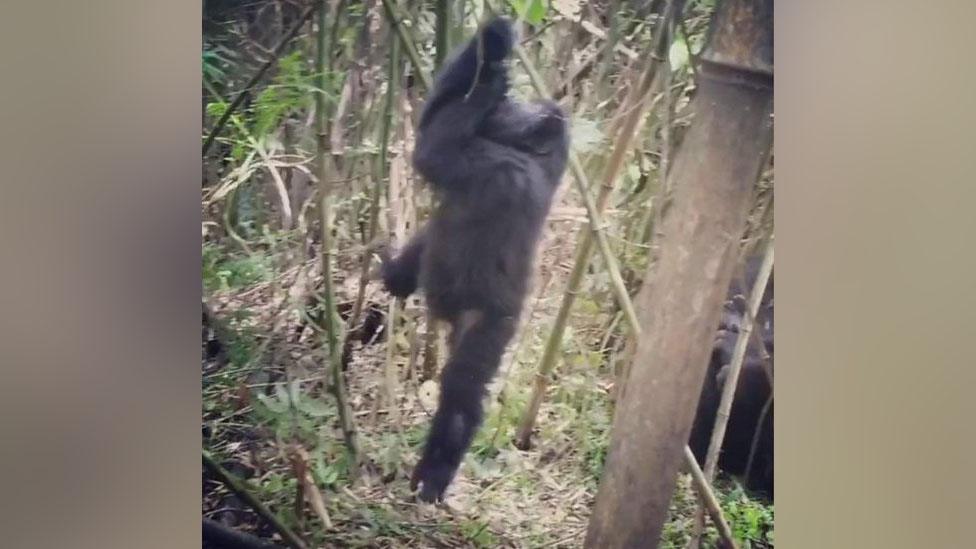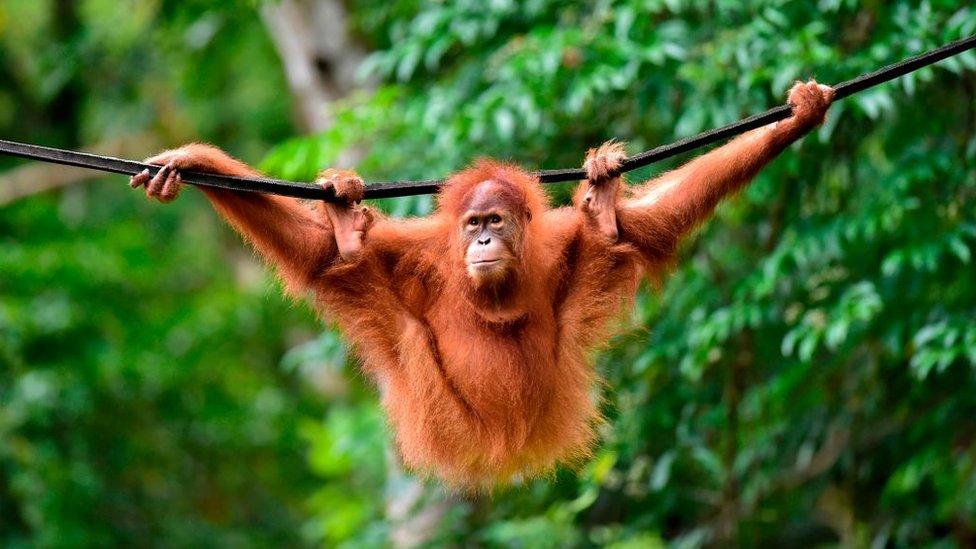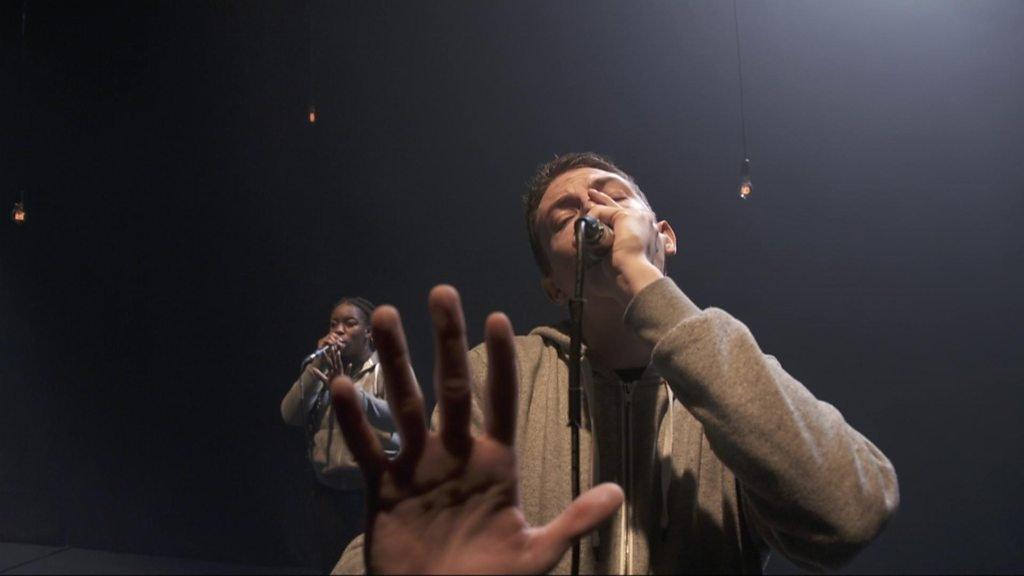Orangutans produce sounds 'like beatboxers'
Orangutans produce sounds 'like beatboxers'
At a glance
Orangutans can make two separate sounds at the same time, researchers find
The University of Warwick team say they do it in a similar way to human beatboxers
The research could help towards explaining how human speech evolved, they add
- Published
Orangutans are able to make two separate sounds at the same time in a similar way to humans who beatbox, a new study suggests.
The results provide clues about the evolution of human speech, researchers with the University of Warwick said.
In Borneo, they saw male orangutans produce noises known as "chomps" at the same time as "grumbles" before fights.
This brought to mind beatboxers as they "battle between themselves to settle a winner", Dr Adriano Lameira said.
The team also saw female orangutans in Sumatra produce "kiss squeak" sounds at the same time as "rolling calls" as they tried to alert other apes of a possible attack by predators.

The ability to produce two sounds at the same time was comparable to humans who beatbox, Dr Adriano Lameira said
They studied the primates across 3,800 hours and found several of them used the same vocal ability.
The comparison in humans would be the use of lips, the tongue and jaw to produce consonant sounds and the larynx to produce vowel sounds, Dr Lameira said.
"This of course is very difficult to achieve even for us," he said and added it was best seen in beatboxing.
Beatboxers can produce several sounds at the same time using the air in their mouth to make the sounds and rhythms of hip-hop music.
But as humans were able to do this, there were longstanding questions about where the ability came from, co-author Dr Madeleine Hardus said.
"We know now the answer could lie within the evolution of our ancestors," she added.
Beatboxers from a London academy give storytelling a new meaning
The vocal abilities of wild great apes have been underestimated compared to birds who can produce two sounds together when they sing, the researchers said.
However it was difficult with birds to make comparisons to human speech because of the lack of similar anatomies.
"Now that we know this vocal ability is part of the great ape repertoire, we can't ignore the evolutionary links," Dr Lameira said.
"It could be possible that early human language resembled something that sounded more like beatboxing, before evolution organised language into the consonant and vowel structure that we know today."
Follow BBC West Midlands on Facebook, external, Twitter, external and Instagram, external. Send your story ideas to: newsonline.westmidlands@bbc.co.uk, external
Related topics
More like this story
- Published14 March 2023

- Published24 March 2022

- Published25 March 2019

- Published13 February 2013